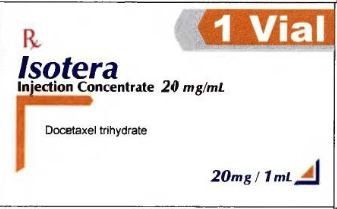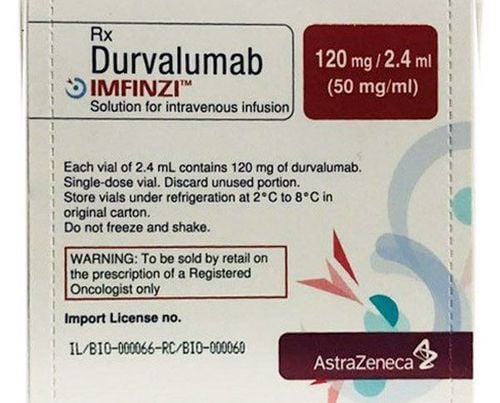This is an automatically translated article.
Radiation therapy for head and neck cancer exposes the normal soft tissues of the jaw, face, and throat to radiation that can lead to tissue damage, which is called radiation fibrosis. The signs and symptoms of soft tissue damage from radiation therapy are collectively known as radiation sclerosing syndrome.1. What is radiation sclerosis syndrome in head and neck cancer?
Fibrosis is a term referring to the breakdown of normal tissue components and their replacement by the matrix and disorganized collagen fibers. Patients with fibrosis often experience tissue shrinkage that frequently leads to loss of organ function, significant impairment in quality of life, or even death.
Radiation therapy is often used to treat patients with head and neck cancer. Radiation destroys cancer cells and can also affect healthy cells. Radiation therapy can increase fibrin production. Fibrin is a protein found in the body that builds up and causes radiation tissue damage over time. All soft tissues in the radiation field can be affected, including skin, connective tissue, muscles, nerves, and blood vessels. The signs and symptoms of soft tissue damage from radiation therapy are called radiation sclerosis syndrome. Radiation-induced fibrosis can lead to the following consequences:
Change in tissue size. Spasticity and atrophy Bones become weak and brittle Heart, lung and nerve damage Lymphedema.
2. Symptoms of radiation sclerosis syndrome
Patients may notice signs and symptoms of radiative fibrosis several weeks to years after treatment ends. These symptoms usually get worse over time. Patients who are receiving radiation therapy for head and neck cancer are at high risk for radiation sclerosis syndrome. This is because patients frequently receive high doses of radiation to the head and neck areas. Some symptoms of radiation sclerosis syndrome in head and neck cancer include:
Jaw stiffness: About 25% of patients receiving radiation to the jaw muscles develop jaw stiffness and reduce the patient's ability to open the mouth. Neck pain and tension (cervical dystonia): Radiation therapy to the soft tissues of the neck leads to fibrosis under the skin and causes pain or discomfort with limited range of motion in about 10% of head and neck cancer patients. Head and neck lymphedema or swelling due to impaired lymph drainage: occurs in less than 10% of patients treated for head and neck cancer. Lymphedema can affect speech and swallowing function and can lead to facial swelling and distortion. Difficulty speaking and swallowing: dysphagia is a symptom that occurs in about 15% of head and neck cancer patients. The incidence of swallowing impairment following radiation therapy is variable and depends on the dose of radiation delivered to the swallowing muscle and the addition of chemotherapy during therapy.
3. Diagnosis of radiation fibrosis syndrome
Jaw stiffness is diagnosed by measuring mouth opening in millimeters Stiffness, pain, and spasm of the neck are patient-reported signs and evaluated by experienced physicians using Evaluation tool established The diagnosis of head and neck lymphedema is based on the patient's signs and symptoms. Evaluation may be needed by a speech-language pathologist or by a clinician with special expertise in head and neck cancer. Radiotherapy-associated dysphagia usually needs to be evaluated by a speech-language pathologist and may require an endoscopy and/or X-ray.
4. Treatment of radiation sclerosing syndrome
The treatment for radiative fibrosis syndrome depends on the symptoms and side effects the patient experiences. Physical therapy, occupational therapy, speech/swallowing therapy, and surgery can all play an important role in the treatment of radiative fibrosis syndrome. Specific therapies for each symptom are as follows:
Jaw stiffness is treated with an active exercise regimen using a variety of commercially available devices. Neck stiffness, pain and dystonia are treated Physical therapy to improve range of motion and reduce pain. Nervous stabilizers and botulinum toxin injections may be indicated in some patients. Lymphedema of the head and neck is treated with lymphatic drainage. Dysphagia therapy requires involvement of a speech specialist. linguist and physician experienced in the evaluation and management of patients with head and neck cancer. In summary, radiation sclerosis syndrome is a progressive tissue sclerosis with varied clinical symptoms. The disease is often a late complication of radiation therapy and can occur weeks or even years after treatment. When there are symptoms such as stiff jaw, difficulty swallowing, neck pain/strain or lymphedema after radiation therapy for head and neck cancer, patients should immediately go to medical facilities for timely diagnosis and treatment.
Please dial HOTLINE for more information or register for an appointment HERE. Download MyVinmec app to make appointments faster and to manage your bookings easily.
Reference source: oncolink.org












